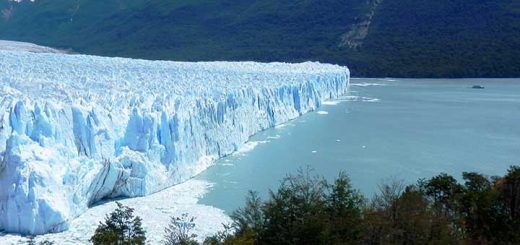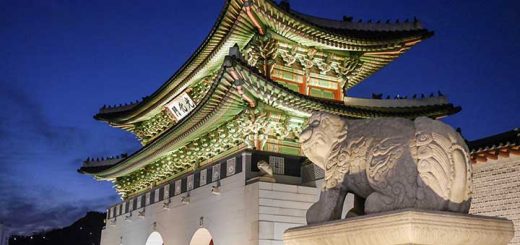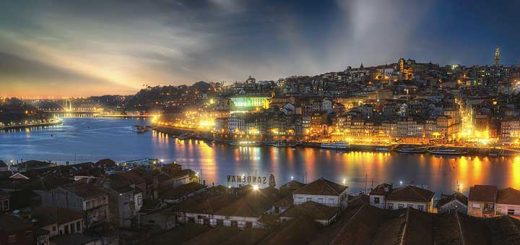Vietnam Travel Guide
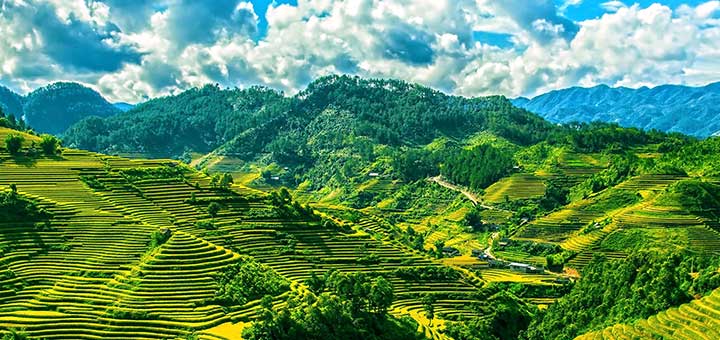
With its captivating cities, progressing tourism sector and economy and luscious lands, Vietnam is one of the contemporary top holiday destinations and it is sure to grow even more in fame and popularity. One of the best things about visiting Vietnam is the fact that despite the many tourists all year round, the country is still not enough popular to be crowded with hordes of tourists and its amazing lands are still relatively unfamiliar for the commercial traveler, which makes visiting Vietnam even more exciting and special experience.
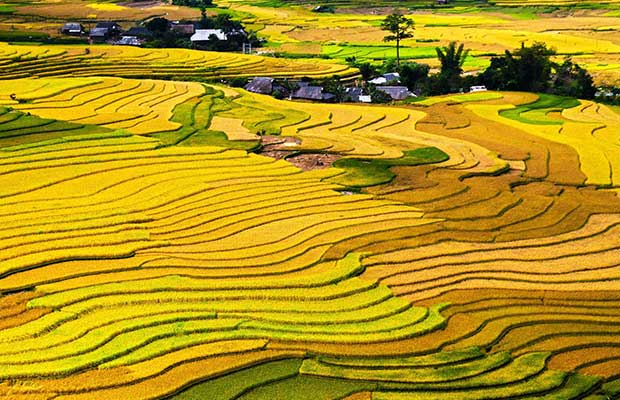
There are not many countries in the world that managed to continue developing and growing from the ashes or war so beautifully and gracefully as Vietnam did it. Although the country’s economy is still far away from the leading ones worldwide, the country definitely marks an impressive progress for the last dozen of years and we are more than sure that this tendency is going to be kept positive in the upcoming decades, which is only good news for the enthusiastic travelers and tourists from around the globe. Vietnam is today a country on the move more than ever – first we have the progressive move forward and the people’s hope is the main fuel of this tendency, additionally visiting the country is easier than ever, the infrastructure in Vietnam is better than ever, hotels are getting better and higher in quality, the socialist market economy in the country is the forward-thinking approach the country has adopted for good and the entrepreneurial spirit is really present in the country.
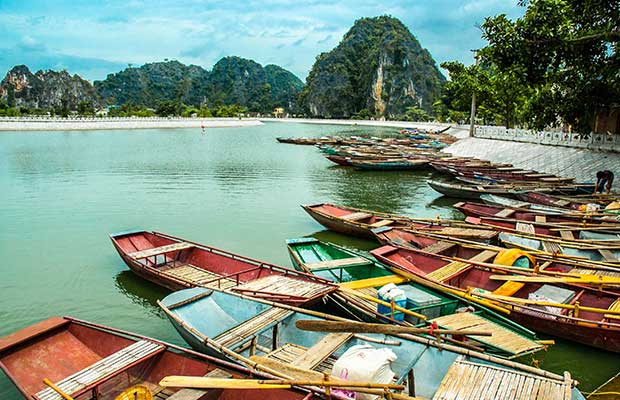
Vietnam is the phoenix arisen from the war and bad economy’s ashes and even beyond than all this, because it is a home to the simplest, most wonderful and natural for the human nature pleasures – endless beaches, shimmering waters, venerable pagodas, magical culture, vibrant nature and captivating cities. So if you want to witness the Renaissance in Vietnam, make sure to start planning your journey to this wonderful country and you won’t be left disappointed, indeed! This is the best time to visit the country and soak in the overall and intoxicating sense of optimism and hope.
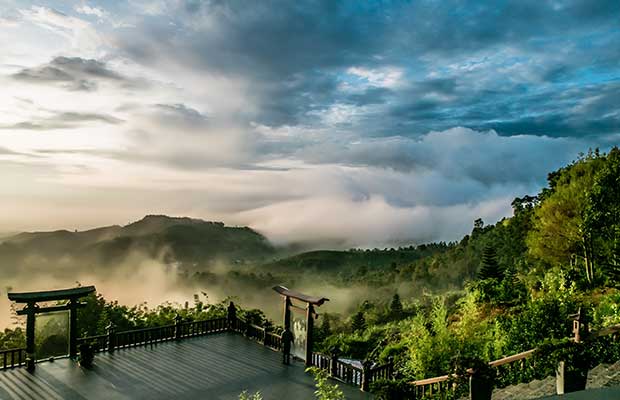
For most of the tourists and foreign visitors of the country, the striking resemblance of the biggest, most progressive megacities of Asia is extremely surprising and exciting to be witnessed in the fast growing landscapes of the main Vietnamese cities such as Hanoi, Ho Chi Minh and others, but despite the fascinating cityscapes, there is one thing that wins over every heart for sure – the amazing nature of Vietnam. Vietnam occupies a narrow strip of land that is stretched between the neighbouring Laos, Cambodia, the rugged mountain silhouette, the Red River, Mekong, and the South China Sea. Comparing the progressive urbanistic backdrop with the tribal lands in far east and far west is yet another magical experience for the traveler – to witness the quirky culture and lifestyle of the ethnic minorities and the classic image of Vietnam with the paddy fields, dragonflies and conical-hatted farmers all in one place.
Ho Chi Minh City
One of the main and most progressive cities in Vietnam is Ho Chi Minh City – the place called home by eight million people, sweeping economic changes and entrepreneurial spirit. A thriving metropolis challenging the biggest Asian cities, Ho Chi Minh is definitely one of the main highlights of every journey to Vietnam. All the progress made in the metropolis and the newest Asian powerhouse come with all the comforts of the contemporary time – amazing hotels, fine restaurants, vibrant bars, atmospheric places, luxury goods.
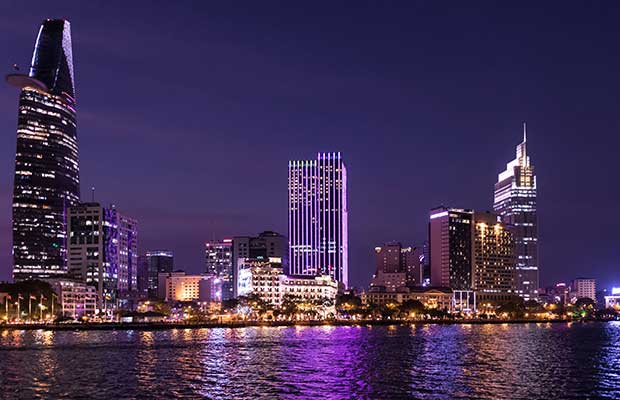
However, no matter how amazing and vibrant the city looks through the eyes of the average traveler, Ho Chi Minh is still a place of a lot of contrasts, where the gap between the wealthy ones building the future of the city and the street children selling books, postcards and lottery tickets to the visitors of the city to earn money for simple food is just heartbreaking. Despite the fact that the number of the homeless people and beggars is slowly, but sturdy decreasing, tourists and visitors of the bigger Vietnamese cities need to keep in account that poverty is still a big part of the country and goes with the territory.
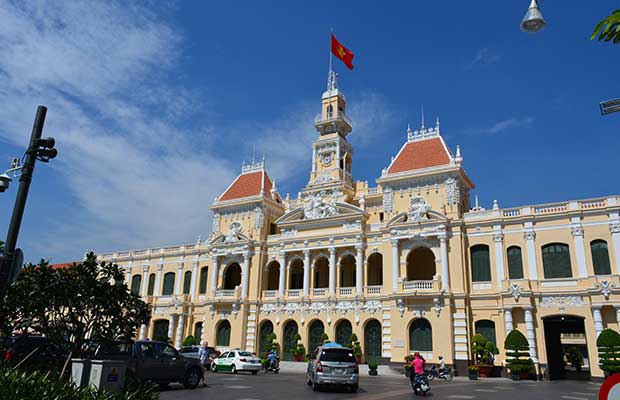
Nevertheless, Ho Chi Minh is still a wonderful city worth visiting with its boiling and dynamic blend of sounds, colours, cultures and sights. New office buildings and hotels are growing from nothing overnight, which provides the city with the distinctive western-style aesthetics and cityscapes. But the western beauty is just a simple backdrop to the real charms of the city – the local people. Smartly dressed schoolkids crossing the boulevards, streetside baguette and other local food sellers are wandering around, while women are crossing the streets around on their motorcycles and faces hidden behind bandanas and so on, and so on, and one of the best pleasures in the city is simply soaking its everyday life and activities, absorbing the dynamic flow of people from all ranges of life.
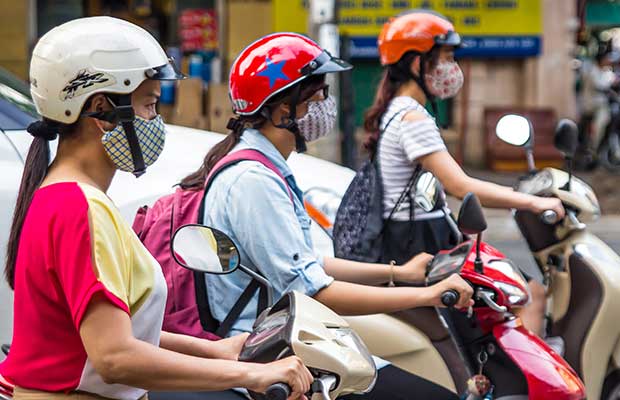
Ho Chi Minh is divided into 24 districts, but the only ones visited by tourists are One, Three and Five. District One is called Saigon and it is known as the French Quarter of the city – here is where several of the city’s museums and colonial remnants are located. However, the rest of the city’s sights and charms are dotted around the city and you would need a good prior research and plan, if you want to visit most of the must-sees. For most of the visitors of the country, war is one of their primary associations with the country and a frame of reference, so it is natural that Vietnam is full of historical hot spots open for visitors and guests of the city.
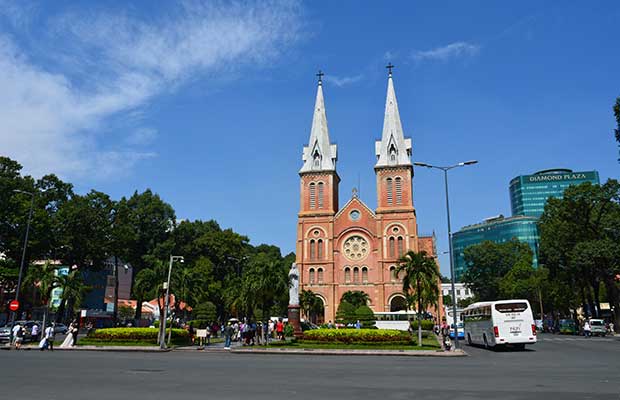
However, if you are fed up with the historical places, there is much more to see and enjoy in Ho Chi Minh – Notre Dame Cathedral and Hotel de Ville are reminders of French rule that blend surprisingly well with the examples of the local culture just a few streets away – Quan Am Pagoda and Jade Emperor Pagoda. You can escape the city’s dynamic and take a quick break at the Botanical Gardens, which are a home to the city’s Historical Museum too. The Cu Chi Tunnels are yet another famous and interesting trip you can take within the city along with the fanciful Cao Dai Temple. Another one-day excursion includes the Mekong Delta at My Tho and the South China Sea at Ho Coc.
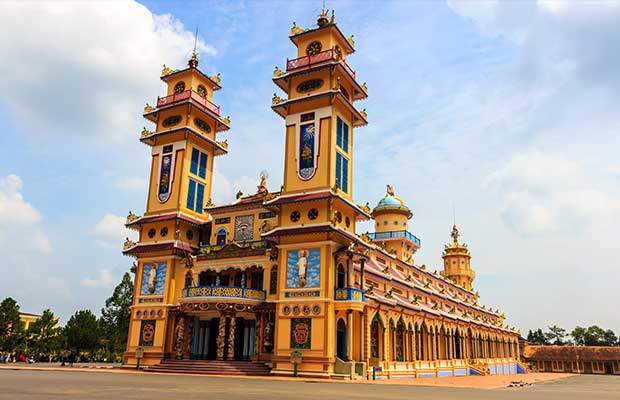
Hanoi
Hanoi is the capital of Vietnam and its most romantic city. The city is bordered by the Red River in the east and by the rail line to the north and west. With its many charms and extreme beauty, Hanoi is certainly one of the Asian cities that definitely worth visiting. A feast for all senses and a representation of many aesthetics, Hanoi is certainly a symphony of lemon-hued colonial buildings, buzzling streets with millions of motorbikes strolling around, the mesmerising scents and tastes of local street foods and above and beyond all that! The city of Hanoi is yet another Vietnamese place, where progress, urbanism and modernisation touch open, however the change is happening more gracefully in the capital.

One of the best things you can enjoy in Hanoi is the Hoan Kiem Lake that is located right at the heart of the Old Quarter and the tree-lined boulevards of the French Quarter. Head to the west of these central districts and you will reach some of the Hanoi’s most impressive monuments that occupy the space of the former Imperial City and are grouped around the Ho Chi Minh’s Mausoleum and extending south to the ancient walled gardens of the Temple of Literature. Modern Hanoi is surely challenging and rivaling the infamous Ho Chi Minh by slowly but surely adopting the progressive, buzzling and dynamic metropolitan lifestyle and aesthetics.
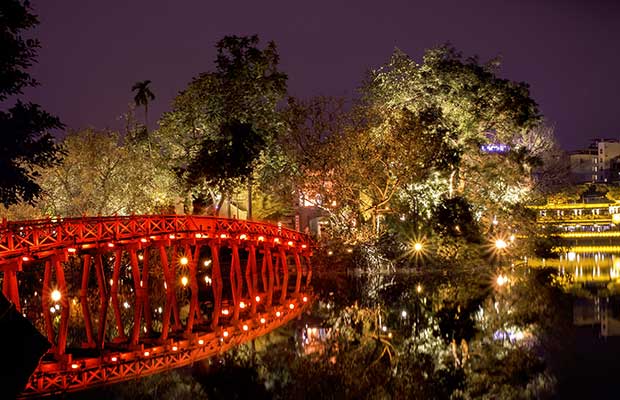
Full of sophisticated restaurants, fancy bars, glitzy clubs, quality hotels and impressive shopping malls, Hanoi is certainly a city that will never leave you feeling bored or disappointed. Nevertheless, no matter the investments made for adding a modern urbanistic aesthetic to the city, Hanoi still manages to keep its distinctive and old-world charm and beauty.
The Mekong Delta
Indeed, one of the most magnificent and beautiful places in Vietnam, where you can celebrate the wonderful nature of the country, is the delta of Mekong river. The paddy fields and swamplands surrounding around the delta are adding even more to the whole landscape, so it all feels like you have finally enjoyed all the special beauty you have read about in the geography textbooks and magazines. Stretching its luscious land from the Ho Chi Minh city limits to the Gulf of Thailand, the Mekong Delta is not only an agriculture miracle in Vietnam, where one third of country’s food is produced and grown, but also one of the Vietnam’s most enduring images and an attracting place for thousands of tourists and travelers from around the world. To the local people, this place is known as Cuu Long or The Nine Dragons and it provides each visitor with a memorable experience, because of the nature’s diversity here.
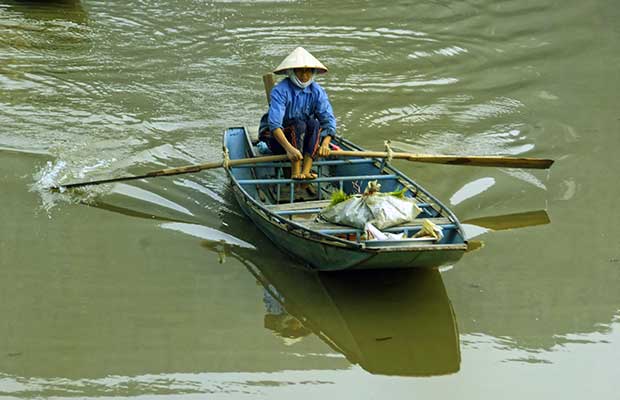
Indeed, one of the most idyllic and picturesque landscapes you can ever find and enjoy in Vietnam, unlike the big and hectic cities, the Mekong Delta is offering yet another unique and atmospheric experience, a whole new world for you to explore. If you prefer to stay away from the dynamic of the big cities and are up to a more laidback and relaxing type of holiday, then keep in mind that there are many little towns in the delta that offer a good number of accommodations for tourists and travelers. There are so many things that could be done in this region. For example, you can take a boat trip from My Tho that is also near enough to Ho Chi Minh.
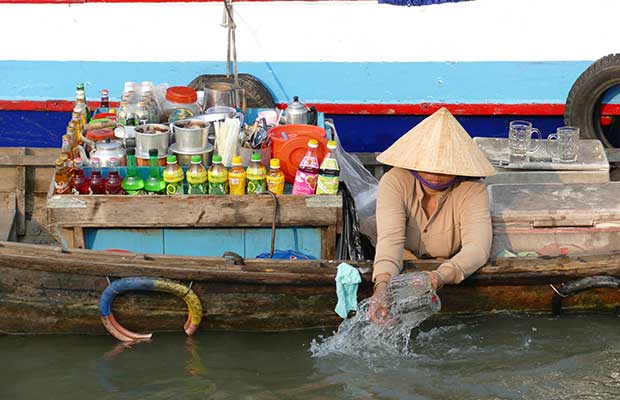
Cao Lanh, on the other hand, is a great place for bird enthusiasts, while Sa Dec is mesmerising with its river scenes and colourful flower nurseries. The delta’s biggest town is definitely Can Tho, where the most of the tourists are going to and spending their time at. In the town you can find decent hotels, great restaurants and the infamous and attractive floating markets nearby. Most of the other towns around are recommended to be explored by boat. The best season to visit this area of Vietnam is in the dry season, which runs from December to May.
Some of the highlights of your journey to Vietnam include:
• Ethnic markets and their lively and colourful atmosphere, where you can buy not only some quirky goods from, but also have a closer look to the local culture and traditions.
• Temples and pagodas, of course, are amongst the most special, unique and beautiful architectural examples in Vietnam.
• Tet is the most important festival in the local calendar, when the New Year is welcomed and celebrated.
• Cu Chi tunnels, where you can look out for the spiked booby traps.
• Bia Hoi are friendly, fun and cheap bars that will leave a memorable experience.
• The Citadel is the former historical one in Hanoi and impress everyone with beautiful architecture, mausoleums and gardens.
• Mua roi nuos or the water puppets is a very special form of art that is developed in the Red River delta.
• Experience silk tailoring by visiting one of the many specialized places in Hanoi.
• Trekking in the northern mountains around Sa Pa.
• Take a guided trek or ride an elephant in Lak Lake.
• Take a trip to the Red River delta.
• And don’t forget to enjoy the Mekong delta too.
• A boat trip to Ha Long Bay.
• Chill out and enjoy life on one of the best unspoilt beaches on the Phu Quoc island.
• Ride the Reunification Express between Hanoi and Ho Chi Minh.
• Music is the most important element of Vietnam’s traditional arts.
• Browse the local markets and try some amazing traditional Vietnamese foods.
• Take a snorkeling trip in the crystal waters surrounding Nha Trang.
When to go?
Vietnam has a tropical monsoon climate you would like to consider, when planning your holiday in the country. The south and southwest is dominated by the monsoon from May to September, and the northeast from October to April. The monsoon brings a lot of rain in summer, while winters are mostly rainy along the central coast and the eastern edge of the central highlands. Temperatures in the south remain equable all year round, while the north experiences some drastic temperature amplitudes and variations.
Essentials to remember:
• Vietnam is a Socialist Republic and one of the world’s last-surviving one-party Communist states. It shares borders with China, Laos and Cambodia.
• Vietnam has a population of ninety million. 70% of them live in the countryside. Over half of the people are under 25 years old.
• During the last decade the economy of the country grew with over 7% per year.
• Vietnam is a home to impressive plant and animal life diversity and one of the rarest species in the world.
• There are three international airports in Vietnam – in Ho Chi Minh City, Hanoi and Da Nang. There are many direct flights to these airports from around the world, but most of the visitors prefer cheaper ways of flying, such as an indirect flight routed through Bangkok, Singapore or Hong Kong. One of the region’s low-cost carriers are Jetstar, Tiger Airways, Air Asia. The highest (and most expensive) season for flights is from July to August.
• The standard of accommodation in Vietnam is excellent. In the main tourist areas in the big cities, there is a large range of hotels and accommodations to cater all needs and budgets. There is a massive increase in the in the number of luxury resorts along the coast.
• All hotels charge a 10% government tax, while the top-class hotels will charge you with additional service charge (usually 5%). These charges may or may not be included in the room rate.

